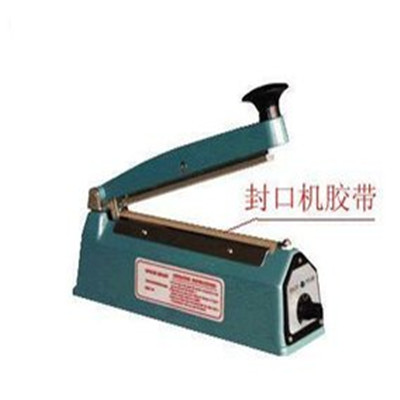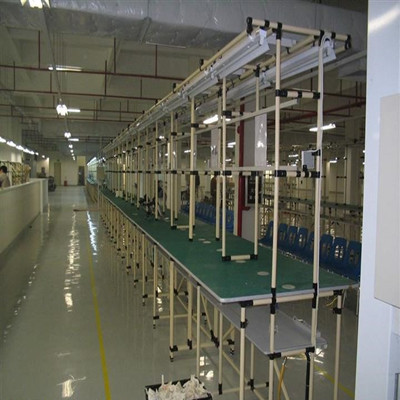one. introduction
Water resistance is a good indicator of the performance of multi-point capacitive touch screen design. It seems that multi-capacitive touch screens that use mutual capacitance scanning have natural water resistance, which does not constitute a design challenge. Why do you say this way? Because the touch screen is scanned by self-capacitance, the direction of the signal changes caused by water droplets and finger touch is the same, and it is quite difficult to distinguish the water droplets from the finger touch. The direction of the change of the signal generated by the touch screen water droplet and the finger touch of the mutual capacitance scanning is exactly opposite, because the finger touch reduces the mutual capacitance, and the water droplet increases the mutual capacitance. This gives the impression that multi-capacitive touch screens that use mutual capacitance scanning have natural water resistance without the need for special measures for waterproofing. The real situation is not so simple. When the water drops on the mutual capacitance screen, it does not cause false triggering. However, when the water droplets are wiped off, touching the original place with the finger is not working, or there is no finger touch. A false touch signal will appear from time to time. When you are lucky, you can detect finger touches after a while. In most cases it is difficult to revert back to the original touch sensitivity. We know that a qualified product does not allow such a situation to occur, and it does not depend on good luck. Therefore, how to solve the problem of finger touch failure caused by water and the problem of false triggering is a challenge of multi-point capacitive touch screen design. In fact, the problem of touch failure due to water is not just water droplets, it also includes water film and large pieces of water.
Second, the effect of water on self-capacitance and mutual capacitance
1. First let's take a look at the self-capacitance and mutual capacitance of the touch screen.
A self-capacitance can also be generated between a sensing block (assumed to be A) on the touch screen and its adjacent sensing block (assumed to be B), and mutual capacitance can also be generated. If the high frequency AC signal Tx is applied to the sensing block A, the sensing block B is grounded, and the coupling between the sensing blocks A and B is self-capacitance coupling, and the size of the self capacitance is Cs. If the high-frequency AC signal Tx is applied to the sensing block A, the sensing block B receives the signal Rx from the sensing block A as the sensing electrode. At this time, the coupling between the sensing blocks A and B is mutual capacitance coupling, and the mutual capacitance is Cm. . The self-capacitance Cs size and the mutual capacitance Cm are proportional to the boundary length between the sensing blocks A and B and the dielectric constant of the medium, and are inversely related to the distance between the sensing blocks A and B. In general, the potential on the sensing block A is higher than the potential on the sensing block B, so the direction of the electric field always goes from the sensing block A to the sensing block B.
2. Next, look at the effect of finger touch on self-capacitance and mutual capacitance.
In the self-capacitance coupling, since the B sensing block is grounded, the A sensing block is both the transmitting end of the excitation signal and the receiving end of the measurement signal; in the mutual capacitive coupling, the A and B sensing blocks are respectively the transmitting end of the excitation signal and The receiving end of the measurement signal. When the finger touches the cover on the sensing block, since the finger and the human body can be regarded as conductors, the capacitance Cbody between the human body and the earth and the capacitance Cboard between the device ground and the earth are large enough, and the high frequency AC excitation signal is only There is a very small capacitive reactance, so the potential of the finger in the touch system can be considered to be approximately the potential GND of the device ground. Refer to Figures 3 and 4. Thus, in the electric field coupling of the self-capacitance, the finger touch corresponds to a capacitor CFT/FR connected in parallel with the self-capacitance Cs, so the finger touch increases the self-capacitance. In the electric field coupling of the mutual capacitance, since the potential of the finger in the touch system is approximately the potential GND of the device ground, the potentials of the sensing block A and the sensing block B are higher than the potential of the finger, in the sensing block A and the sensing block B. An electrical coupling will occur between the finger and the finger, which means that coupling capacitances CFT and CFR are generated between the sensing block A and the sensing block B and the finger. When a high frequency AC excitation signal is applied to the sensing block A, the current through the mutual capacitance Cm to Rx is shunted by the finger capacitances CFT and CFR, and the current at the receiving end Rx is smaller than the original, so that it is equivalent to each other. The capacitance Cm is reduced, so usually we say that the finger touch reduces the mutual capacitance.
3. Let's look at the effect of water on self-capacitance and mutual capacitance.
When the water falls on the touch screen, since the water is electrically conductive, it can be considered as a conductor, which will also change the electric field coupling between the sensing block A and the sensing block B. However, the surface area of ​​water is much smaller than that of the human body. The capacitance Cbody between the human body and the earth is no longer present. The capacitance between the water droplets and the earth is very small, and it is almost zero. The potential of the water droplet in the touch system can no longer be approximately the potential GND of the device ground, and its potential is determined by the potentials of the sensing block A and the sensing block B. Based on common sense, its potential should be between the potential of the sensing block A and the potential of the sensing block B. Referring to FIG. 5 and FIG. 6, in the electric field coupling of the self-capacitance, the water droplets form capacitances CWT/WR and CWS with the sensing block A and the sensing block B, respectively, and it can be considered that the two capacitors are connected in series and then connected in parallel at both ends of the Cs. Therefore, for a self-capacitance screen, water droplets increase the self-capacitance like a finger, but since the two capacitors generated by the water droplets are connected in series and then connected in parallel at both ends of Cs, the value of the series capacitor will be less than any capacitor in the series capacitor. For a water droplet with a finger-sized diameter, the resulting signal change will definitely be less than the signal change produced by the finger touch, but they are in the same direction. Similarly, in the electric field coupling of mutual capacitance, the water droplets form capacitances CWT and CWR with the sensing block A and the sensing block B, respectively, and it can be considered that the two capacitors are connected in series and then connected in parallel at both ends of Cm, so for the mutual capacitance screen, Water droplets do not reduce the mutual capacitance as the finger touches, but increase the mutual capacitance! Similarly, since the two capacitors generated by the water droplets are connected in series and then connected in parallel at both ends of Cm, the value of the series capacitor will be less than any capacitor in the series capacitor. For a water droplet with a finger diameter, the signal change will also be affirmed. It is smaller than the signal change caused by the finger touch. Usually it is 1/4 of the size of the finger touch signal, but the signal change caused by the touch with the finger is reverse.
4. The mutual capacitance screen is falsely triggered after the water droplets are erased.
We know that self-capacitive screens can only achieve single-touch and incomplete two-point touches (ghosting occurs on the other two diagonals of the rectangle formed at two points), while multi-touch must be based on a mutual-capacitance touch screen. Because the finger touch reduces the mutual capacitance, the water droplets increase the mutual capacitance. This makes it easy for the designer to create an illusion that the water drops on the mutual capacitance screen and is not mistaken for a finger touch, that is, it does not cause false triggering. Let's see what the actual situation is. Since the finger touch signal is based on the difference between the basic line value and the AD conversion value when there is a finger touch, and the basic line value is usually approximately equal to or equal to the AD conversion value when there is no finger touch, the water drop falls on the mutual capacitance screen although the AD is not made. The change of the conversion value changes in the direction of the AD conversion value when the finger touches, but causes the AD conversion value to change in the opposite direction of the AD conversion value when the finger touches, which causes the opposite direction of the AD conversion value when the basic line value is touched toward the finger. Offset. When the water droplets are wiped off, the AD conversion value will quickly return to the vicinity of the original basic line value, and the basic line value cannot be quickly updated to the original basic line value due to the limitation of the basic line value algorithm. At this time, the AD conversion value and the basic line value generate a difference signal, and the direction of the change of the difference signal is consistent with the direction of the change of the AD conversion value when the finger is touched. When the offset of the basic line value caused by water approaches or exceeds the set hand threshold, an erroneous trigger occurs when the water is wiped off. In many cases, this false trigger does not easily return to normal because the offset base line value is not easily restored to the normal base line value. False triggers last a long time and even require a reset to restart the touch screen system.
The self-adhesive fabrics are coated with PTFE and have a layer of silicone or acrylic adhesive. The silicone adhesive fabric have a continuous operating temperature range between -70℃ and +240℃. The acrylic adhesive fabrics serves from -40℃ and +150℃ while it offers a very high initial adhesive power and a excellent solvent resistance.
Characteristics:
·easy to apply
·excellent high temperature resistance
·waterproof
·non-poisonous


Adhesive Tapes,Sealing Plastic Film,Sealing Adhesive Tape,Double Sided Adhesive Tape
TAIZHOU YAXING PLASTIC INDUSTRY CO., LTD , https://www.yaxingptfe.com